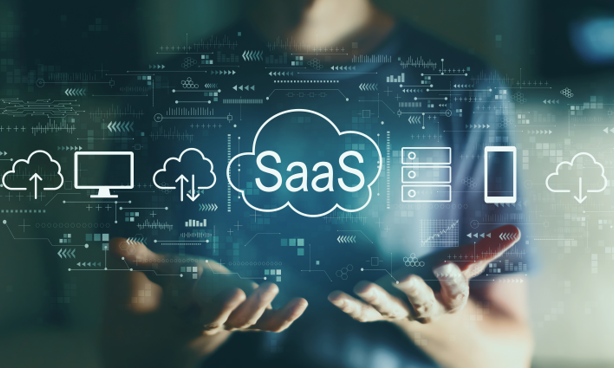
In today's rapidly evolving digital landscape, Software as a Service (SaaS) has become a dominant business model. Unlike traditional software, where customers purchase a license to use the software indefinitely, SaaS involves a subscription-based approach. This fundamental difference significantly impacts how businesses account for their financial transactions. Jodie Fisher CFO from Dallas, Texas, delves into the intricacies of SaaS accounting, highlighting key principles, differences from traditional software accounting, and best practices to ensure precise financial reporting.
The Basics of SaaS Accounting
SaaS businesses operate on a subscription model, where customers pay a recurring fee to access the software. Jodie Fisher CFO from Dallas, Texas, explains that this model affects revenue recognition, cost allocation, and financial reporting in unique ways. Understanding these differences is crucial for accurate accounting and compliance with financial regulations.
Revenue Recognition
One of the most critical aspects of SaaS accounting is revenue recognition. In traditional software sales, revenue is typically recognized upfront when the software is delivered. However, for SaaS businesses, revenue recognition is spread over the subscription period. Jodie Fisher CFO from Dallas, Texas, explains that this method aligns with the delivery of the service and ensures that revenue is matched with the period in which the service is provided.
Key Considerations:
- Subscription Fees: These are recognized over the term of the subscription. For example, if a customer subscribes for one year, the revenue is recognized monthly over that year.
- Deferred Revenue: Payments received in advance are recorded as deferred revenue (a liability) and recognized as revenue over the subscription period.
- Variable Consideration: Discounts, refunds, and incentives must be accounted for when recognizing revenue. This requires estimating the expected impact of these factors and adjusting revenue accordingly.
Cost Allocation
SaaS businesses incur various costs, such as development, hosting, and customer support. Jodie Fisher CFO from Dallas, Texas, explains that the proper allocation of these costs is essential for accurate financial reporting.
Key Considerations:
- Cost of Goods Sold (COGS): Includes costs directly associated with delivering the service, such as hosting fees, software maintenance, and customer support.
- Operating Expenses: Comprises costs related to sales, marketing, research, and development. These are not directly tied to the delivery of the service but are essential for the business's overall operation.
- Capitalization of Development Costs: Some development costs can be capitalized and amortized over time, rather than expensed immediately. This treatment depends on the stage of development and the nature of the costs.
Differences Between SaaS and Traditional Software Accounting
The primary difference between SaaS and traditional software accounting lies in the timing and method of revenue recognition. While traditional software accounting recognizes revenue at the point of sale, SaaS accounting spreads it over the subscription period. Jodie Fisher CFO from Dallas, Texas, explains that this difference impacts various financial metrics, including revenue, profitability, and cash flow.
Impact on Financial Statements
- Balance Sheet: SaaS companies often have significant deferred revenue on their balance sheets due to advance payments from customers. This liability reflects the company's obligation to provide the service in the future.
- Income Statement: Revenue is recognized over time, leading to a smoother revenue stream compared to the potentially volatile revenue of traditional software companies.
- Cash Flow Statement: SaaS businesses may experience strong cash flow due to upfront payments, even though revenue is recognized over time. Proper management of cash flow is critical to ensure the business can meet its obligations.
Key Metrics for SaaS Businesses
- Annual Recurring Revenue (ARR): Measures the recurring revenue from subscriptions on an annual basis. It's a critical metric for assessing the company's growth and stability.
- Customer Acquisition Cost (CAC): The cost associated with acquiring a new customer. This includes marketing and sales expenses.
- Customer Lifetime Value (CLTV): The total revenue expected from a customer over their entire relationship with the company. CLTV helps in evaluating the return on investment in customer acquisition.
- Churn Rate: The percentage of customers who cancel their subscriptions over a given period. A high churn rate can indicate issues with customer satisfaction or the value of the service.
Best Practices for Accurate SaaS Accounting
Adopting best practices in SaaS accounting ensures compliance with financial regulations and provides a clear picture of the company's financial health. Jodie Fisher CFO from Dallas, Texas, provides some essential practices:
- Implement Robust Accounting Software
Using specialized accounting software designed for SaaS businesses can streamline financial processes and ensure accurate reporting. Look for features such as automated revenue recognition, deferred revenue management, and integration with billing systems.
- Regular Financial Audits
Conducting regular financial audits helps in identifying discrepancies and ensuring compliance with accounting standards. Audits provide assurance to stakeholders that the financial statements are accurate and reliable.
- Transparent Financial Reporting
Maintaining transparency in financial reporting is crucial for building trust with investors, customers, and regulators. Clearly disclose revenue recognition policies, cost allocation methods, and key financial metrics in financial statements and reports.
- Stay Updated with Accounting Standards
SaaS businesses must stay updated with evolving accounting standards and regulations. Standards such as ASC 606 (Revenue from Contracts with Customers) provide guidelines on revenue recognition and require regular review and implementation.
- Effective Cash Flow Management
Proper cash flow management ensures that the business can meet its operational needs and invest in growth opportunities. Monitor cash flow regularly and implement strategies to optimize cash inflows and outflows.
SaaS accounting presents unique challenges and opportunities compared to traditional software accounting. Jodie Fisher CFO from Dallas, Texas, emphasizes that by understanding the key principles, recognizing the differences, and adopting best practices, SaaS businesses can ensure accurate financial reporting and make informed decisions. As the SaaS industry continues to grow, mastering these accounting intricacies will be vital for long-term success and sustainability.
